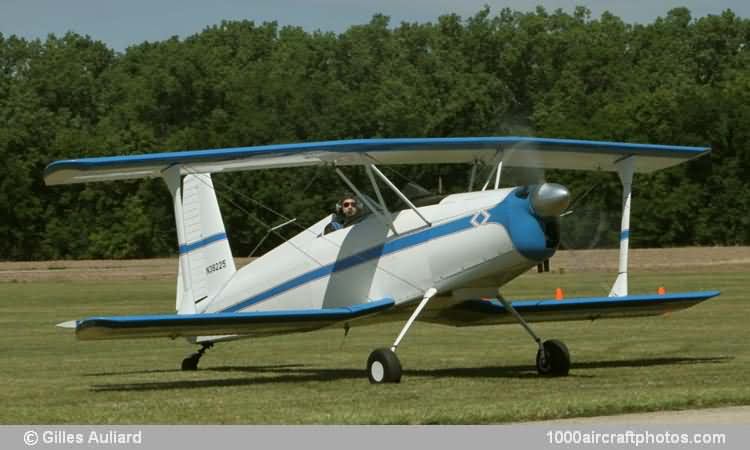Merkel began the design of the Mark II in 1963, and construction began three years later, in February 1966. Registered N38225 and powered by a 220 hp Franklin 6A-350-C1 piston engine, the first flight was made on April 11, 1973, and FAA certification in the Experimental category was awarded for both single-seat and two-seat configurations. By February 1978 the aircraft had completed 250 flight hours, including aerobatic flying, during which it had been flown to its design limit loads and demonstrated hands-off recovery from a six-turn spin.
Merkel planned to produce a single-seat version for unlimited competitive aerobatics, and a two-seat version to serve as an aerobatic trainer, and formed the Merkel Airplane Company at Wichita, Kansas, USA, while the Mark II became available also for amateur construction. In 1989 the Mark IIA was announced, this was an improved version for an 180-200 hp Lycoming O-360 series engine and changes included a smoother cowling, a redesigned control system, no dihedral on lower wing. Two aircraft were reportedly under construction in 1990, but these were almost certainly not completed.
The Mark IIB was a planned version with a 250 hp Walter/LOM M337CE engine, this engine was fitted to the original Mark II prototype N38225, and it first flew in this guise the early-2000s, and still is as pictured above. Further development of the Mark II was halted and no additional examples were built."
Type: Single/two-seat aerobatic biplane.
Wings: Braced single-bay biplane with I-type interplane and N-type center section struts. Streamline flying and landing wires. Wing section NACA 23012. Dihedral 3° 30' on lower wings only. Incidence (both wings) 1° 30'. Sweepback at quarter-chord 12° on upper wing only. Wing panels are single-spar two-cell torsional structures with conventional biplane wire bracing truss. Wing skins of 2024-T3 light alloy. Plain ailerons of similar construction on both wings. No flaps.
Fuselage: Forward fuselage is a welded structure of 4130-N steel tube to rear of cockpits. Semi-monocoque light alloy structure aft of cockpit with 2024-T3 light alloy skin. Fuselage-mounted airbrake planned for single-seat competition version.
Tail unit: Cantilever light alloy structure with 2024-T3 skins on all surfaces. All-moving tail plane with trim-able anti-servo tab. Ground-adjustable trim tab in rudder.
Landing gear: Non-retractable tail wheel type. Main wheels carried on cantilever leaf spring struts. Main wheels have US Rubber tires type 5935-056-AD3, size 17 x 6.6, pressure 24 lb/sq.in (1.69 kg/sq.cm). Maule tail wheel type SFS 1-4 with 6 in (150 mm) diameter solid rubber tire. Cleveland hydraulic disc brakes.
Power plant: One 220 hp Franklin 6A-350-C1 flat-six engine, driving a Hartzell type HC-C2YF-4/C8459-4 two-blade metal constant-speed propeller. Light alloy fuel tank immediately aft of firewall, capacity 18 gal (68 l). Refueling point on upper surface of forward fuselage. An optional belly tank is planned for extended cross-country flights. Oil capacity 2.2 gal (8.3 l).
Accommodation: Single seat, or two seats in tandem, in open cockpits. Canopy optional. Cockpits heated.
System: Electrical power supplied by Prestolite F363 12V engine-driven alternator.
